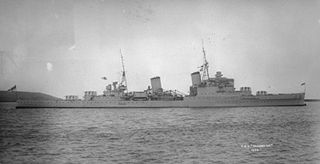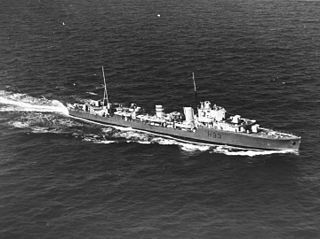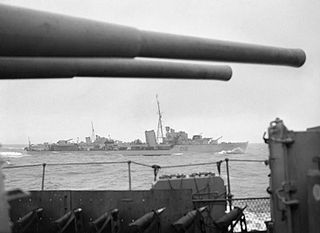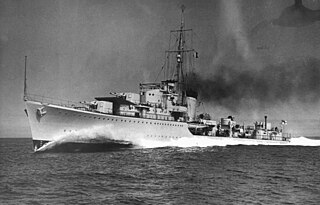 W
WHMS Fiji was the lead ship of the Fiji-class light cruisers built for the Royal Navy shortly before the Second World War. Completed in mid-1940, she was initially assigned to the Home Fleet and was detached to escort a force tasked to force French West Africa to join the Free French. The ship was torpedoed en route and required six months to be repaired. Fiji was then assigned to Force H where she helped to escort convoys to Malta. The ship was transferred to the Mediterranean Fleet in early May 1941. After the Germans invaded Crete a few weeks later, she was sunk by German aircraft on 22 May after having fired off all of her anti-aircraft ammunition.
 W
WHMS Gloucester was one of the last batch of three Town-class light cruisers built for the Royal Navy during the late 1930s. Commissioned shortly before the start of World War II in August 1939, the ship was initially assigned to the China Station and was transferred to the Indian Ocean and later to South Africa to search for German commerce raiders. She was transferred to the Mediterranean Fleet in mid-1940 and spent much of her time escorting Malta Convoys. Gloucester played minor roles in the Battle of Calabria in 1940 and the Battle of Cape Matapan in 1941. She was sunk by German dive bombers on 22 May 1941 during the Battle of Crete with the loss of 722 men out of a crew of 807. Gloucester acquired the nickname "The Fighting G" after earning five battle honours in less than a year.
 W
WHMS Greyhound was a G-class destroyer built for the Royal Navy in the 1930s. Greyhound participated in the Norwegian Campaign in April 1940, the Dunkirk evacuation in May and the Battle of Dakar in September before being transferred to the Mediterranean Fleet in November. The ship generally escorted the larger ships of the Mediterranean Fleet as they protected convoys against attacks from the Italian Fleet. She sank two Italian submarines while escorting convoys herself in early 1941. Greyhound was sunk by German Junkers Ju 87 Stuka dive bombers north-west of Crete on 22 May 1941 as she escorted the battleships of the Mediterranean Fleet attempting to intercept the German sea-borne invasion forces destined for Crete.
 W
WHMS Hereward, named after Hereward the Wake, was an H-class destroyer built for the Royal Navy in the mid-1930s. She was assigned to the Mediterranean Fleet before and the ship spent four months during the Spanish Civil War in mid-1937 in Spanish waters, enforcing the arms blockade imposed by Britain and France on both sides of the conflict. When the Second World War began in September 1939, the ship was in the Mediterranean, but was shortly transferred to the South Atlantic Command to hunt for German commerce raiders and blockade runners, capturing one of the latter in November. Hereward was transferred to the Home Fleet in May 1940 and rescued Queen Wilhelmina of the Netherlands after the Germans had invaded.
 W
WHMS Juno was a J-class destroyer of the Royal Navy laid down by the Fairfield Shipbuilding and Engineering Company, Limited, at Govan in Scotland on 5 October 1937, launched on 8 December 1938 and commissioned on 25 August 1939. Juno participated in the Battle of Calabria in July 1940 and the Battle of Cape Matapan in March 1941.
 W
WHMS Kashmir (F12) was a K-class destroyer built for the Royal Navy during the 1930s, named after the Indian province of Kashmir.
 W
WHMS Kelly was a K-class destroyer of the British Royal Navy, and flotilla leader of her class. She served through the early years of the Second World War; in Home Waters, off Norway and in the Mediterranean. Throughout her service, Kelly was commanded by Lord Louis Mountbatten, as commander of the 5th Destroyer Flotilla. She was lost in action in 1941 during the Battle of Crete.